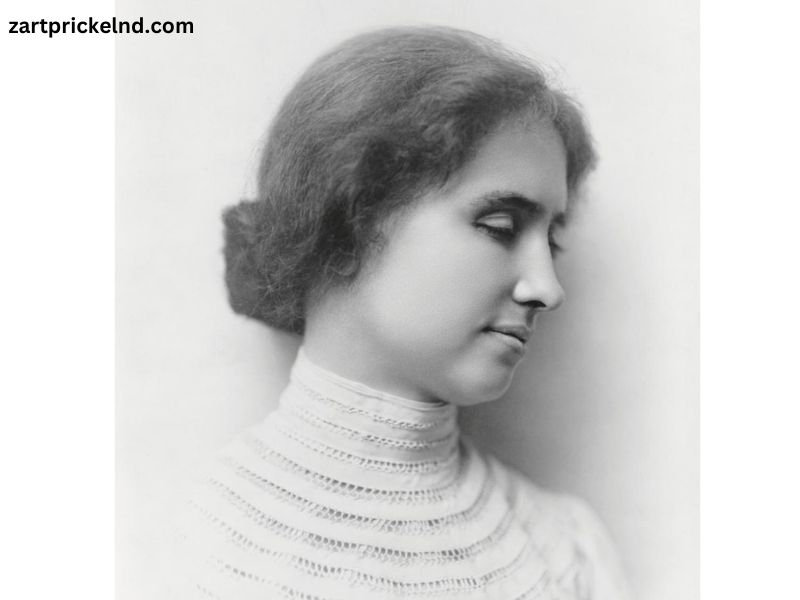The story of Helen Keller flying a plane is one that sparks wonder and disbelief. Helen Keller, known worldwide for her achievements as a deaf-blind woman who overcame seemingly insurmountable obstacles, is celebrated for her pioneering work in education, activism, and writing. But did she actually fly a plane? This question has fascinated people for decades, and the answer provides insight into both Keller’s capabilities and the history of aviation. In this article, we’ll delve into the fascinating story behind Helen Keller’s brief but significant experience in the cockpit of an airplane.
Who Was Helen Keller?
Before diving into the specific story about Keller’s aviation experience, it’s important to understand who she was. Helen Keller was born on June 27, 1880, in Tuscumbia, Alabama. At just 19 months old, Keller contracted an illness that left her both deaf and blind. At a time when disabilities were widely misunderstood and feared, Keller’s future seemed bleak. Many doubted she could ever learn to communicate or live an independent life.
However, Keller’s meeting with her teacher, Anne Sullivan, changed everything. Sullivan used groundbreaking methods to teach Keller how to communicate through the manual alphabet, and later, how to read Braille and speak. Their story became legendary, and Keller grew up to become one of the most famous women of her time, known for her advocacy for people with disabilities, her writing, and her public speaking.
Helen Keller and Aviation
Keller was always fascinated by technology and progress. Her life was marked by a series of groundbreaking achievements, and her determination to live life fully despite her disabilities set her apart as an extraordinary figure. Keller wasn’t afraid to explore new experiences, and this adventurous spirit extended to her interest in aviation.
The story of Keller flying a plane takes place in 1946 when she was 66 years old. By this time, Keller was already a well-known author and public figure, having published books and traveled around the world to lecture on disability rights and women’s suffrage. It was during one of her many travels that she had the opportunity to experience flying an airplane.
The Flight: Fact or Fiction?
On February 1, 1946, Helen Keller took a flight in a small four-passenger plane from the airport in Rome, Italy. The story goes that Keller herself took control of the aircraft, at least for a few minutes, under the supervision of an experienced pilot. Her experience in the air, although brief, was groundbreaking and captured the imagination of the public.
But how much of this story is true? Could a deaf-blind person actually take the controls of an airplane and navigate the skies?
The Details of the Flight
According to multiple accounts, including contemporary reports from newspapers and interviews with people close to Keller, the story is indeed true — Helen Keller did fly a plane. Of course, Keller did not pilot the plane entirely on her own, but she did sit in the cockpit and, with assistance, held the controls for a short period.
Keller later described the sensation of flying in a plane as exhilarating, comparing the feeling of movement and speed to “sailing through space.” She felt the vibrations of the engine through the controls and the seat of the plane, which gave her a sense of movement and direction. It was these vibrations and the changes in altitude that allowed her to perceive the experience of flying in a way that was unique to her.
How Did Keller Fly the Plane?
Keller’s flight wasn’t as simple as stepping into the cockpit and taking the controls. Her participation in the flight was closely guided by the pilot, who provided instructions through her interpreter, Anne Sullivan, and later Polly Thomson. Sullivan and Thomson used tactile sign language, tracing letters and words into Keller’s hand to convey the pilot’s instructions.
Keller’s role in the flight was symbolic, but it was also a demonstration of her indomitable will and curiosity about the world. While she wasn’t responsible for the technical aspects of piloting the aircraft, she took over for a brief period, guiding the plane with assistance. The experience showcased her deep interest in aviation and technology and highlighted her ability to adapt and understand the world in her own unique way.
Public Reactions and Media Coverage
The event received widespread media coverage at the time, and many people were astounded by the idea of Keller flying a plane. Newspapers published stories with headlines like “Helen Keller Flies Plane” and “Helen Keller Takes the Controls of an Aircraft.” The public’s reaction was one of amazement, but it also reinforced Keller’s image as a woman who constantly broke boundaries and defied expectations.
For Keller, the flight was not just a publicity stunt. She often spoke about her love of adventure and discovery, and flying represented the freedom and mobility she cherished. In an era when people with disabilities were often marginalized, Keller’s flight was a powerful statement of her independence and capability.
Keller’s Legacy in Aviation
While Helen Keller is primarily remembered for her contributions to literature, education, and disability rights, her brief foray into aviation remains a memorable chapter in her life. Although she didn’t pursue flying as a hobby or career, her experience symbolized her relentless pursuit of new experiences and her refusal to be limited by her disabilities.
Keller’s flight also served as an inspiration to others with disabilities. In an era when accessibility and inclusion were still in their infancy, Keller demonstrated that people with disabilities could achieve incredible things when given the opportunity. Her flight in 1946 showed that technology could help bridge the gap between disabled and non-disabled people, a message that resonates even today.
Dispelling the Myths
As with many stories from history, the tale of Helen Keller flying a plane has been embellished and mythologized over time. Some versions of the story suggest that Keller flew the plane entirely on her own, without any assistance, which isn’t accurate. While Keller did briefly take control of the aircraft, it was under the careful guidance of a pilot.
However, the fact that Keller participated in the flight at all is remarkable. For a woman who could neither see nor hear, to experience flight and take control of an airplane, even for a short time, was an extraordinary achievement. It underscores Keller’s tenacity and her desire to push the boundaries of what was thought possible for people with disabilities.
Conclusion
Helen Keller’s story is one of resilience, courage, and a thirst for knowledge. Her experience flying a plane, although brief, is a testament to her adventurous spirit and her determination to live life to the fullest. The event also serves as a reminder of Keller’s larger legacy — a life dedicated to breaking down barriers and changing perceptions about what people with disabilities can achieve.
Keller’s flight in 1946 is not just a fascinating anecdote; it is a moment of triumph in a life filled with remarkable accomplishments. By briefly taking the controls of an airplane, Keller once again proved that no challenge was too great for her to overcome, and she inspired countless others to pursue their dreams, no matter the obstacles they faced.
In the end, Helen Keller’s flight stands as a symbol of her pioneering spirit and her refusal to be defined by her disabilities. It remains a powerful story that continues to inspire people to this day, reminding us all that the sky is not the limit — even for those who cannot see or hear it.



